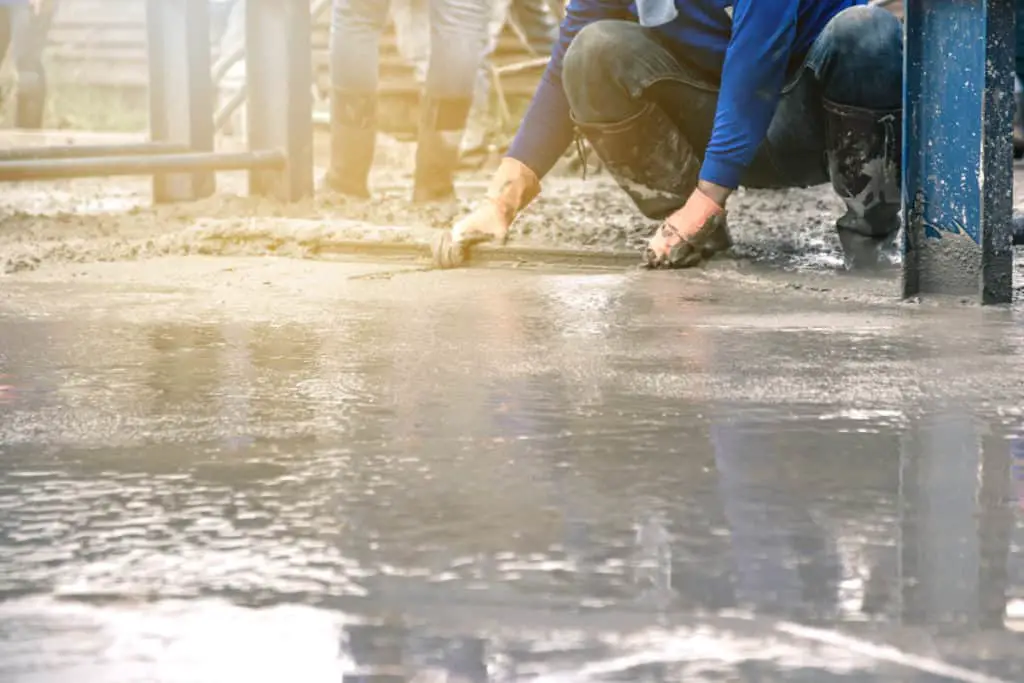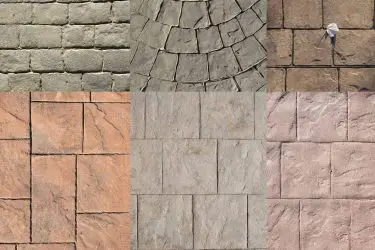Quikrete® is one of the top manufacturers of ready-mix concrete in the industry today. Their concrete is one of the most common mixes used in professional and DIY projects. Knowing how fast the concrete will set, dry, and cure will be useful during your project, but exactly how fast does it take for Quikrete® to dry?
A typical 50-pound bag of 4000 psi Quickrete® Concrete Mix will be dry and strong enough to support weight within about 48 hours if the weather conditions are favorable or if the concrete is installed indoors. The concrete will be fully dry and cured in about 28 days after a proper curing process.
Quikrete® has been in business for 80 years and they manufacture pre-blended packages of concrete, mortars, grouts, stuccos, and other products you can use in your project. They are trusted by many Do-It-Yourselfers and professionals. Below are some things to consider regarding Quickrete®’s drying time.

Table of Contents
Concrete Hydration
Firstly, it’s important to point out that concrete never dries. Not technically, at least. Concrete contains cement binders (normally lime-based), and aggregates such as sand and gravel. Manufacturers also add in other chemicals to help the cement harden.
Through the process of hydration, where water is added into the mixture, the chemicals in the cement will react to the water and begin to harden, eventually forming a rock-hard surface. Because of this chemical reaction, water molecules get left behind in the structure of the concrete.

Because those water molecules get left behind, you’ll hear many professionals say that concrete never fully “dries.” In fact, the curing process after the concrete sets requires more water to be added to the concrete for it to strengthen. It’s not intuitive, but water strengthens concrete over time rather than weakens it.
Setting Vs. Curing Vs. Drying
There are a few terms to understand when reading instructions or when laying concrete for any project. They don’t all mean the same thing, but each contributes to the “drying” of concrete.
“Setting” is when the concrete hardens just enough to the point where you can’t work it anymore. How long a concrete mixture sets depends on how much water was used in the mixture, what kind of mixture you used in the first place, and the weather.
In most cases, when a concrete sets, it is the beginning of the curing process. “Curing” is the process of concrete hardening over a period of time. There are different ways to cure concrete. For example, one method of curing a concrete slab is to cover it with a plastic sheet to keep the moisture from leaving.

All curing methods focus on keeping water in the concrete for as long as possible. It’s important to note as well that using too much water in the concrete mix will dilute the mixture and weaken it. Quikrete® recommends you follow the mixing instructions with each bag of mixture.
Eventually the concrete “dries” and becomes harder than it was in the beginning, but you need to provide enough moisture for a time so that it can reach that point.
After about 48 hours, concrete is hard and dry enough to hold human weight. After 7 days, the concrete reaches about 2500 psi. Quikrete® recommends that for 4,000 psi concrete, you should cure the concrete for 28 days (or a month) before it reaches its full strength.
Finishing
When you “finish” the concrete, you’ve completed pouring the concrete and you need to make it appear nice, smooth, and flat–especially if you’re pouring cement for a sidewalk. Below is a list of tools you need and what their purpose is in finishing the concrete.
- Darby: Smooths and flattens out the surface of the concrete.
- Edging Tool: Used to smooth the concrete along the edges and work the aggregate away.
- Groover: Used to create control or expansion joints in the concrete.
- Floater: Used to “float” or compact the concrete surface.
- Broom: If you want a “broom finish” drag a broom across the concrete surface to create a rough surface.
Finishing should be done while the concrete is setting. There will be a sheen of water that will rise to the surface of the concrete. Wait until this water sheen has evaporated before completing the finishing process. Doing a proper finishing job on your concrete will help with the curing and drying process.
“Fast-Setting” Definition
Quikrete® also offers a “fast-setting” concrete mix. This means that the manufacturer has added extra chemicals into the concrete to give it a “very rapid strength gain.” This strength gain happens from 20 to 40 minutes as supposed to 24 to 48 hours with the regular concrete mix. It’s the kind of concrete mix you would use for quick projects like setting fences, lamps, or mailboxes.
Concrete mixes that set quicker will logically cure and dry quicker. However, using fast-setting concrete can get problematic if you’re not quick enough to “finish” the concrete. It will become unworkable, and could potentially ruin the project.
You should have everything ready to go before laying this kind of concrete. If you’re not prepared, you’ll end up walking away looking for a certain tool, then return and find the concrete has already been set. Once you’re finished mixing, whether it be in a bucket or wheelbarrow, you must place it as quickly as you can.
20 to 40 minutes seems like enough time, but you’ll find it goes by quickly. Make sure you plan out your time in advance. Quikrete® recommends following their instructions for installation.
Weather Conditions
If you’re pouring concrete outside, weather conditions and air temperature also influence how quickly the concrete goes through the curing process.

Ideal conditions for curing concrete would be in warm temperatures (around 70°F). Take into account, however, that the hotter the air temperature the faster the curing/drying process. The colder the air temperature, the slower the curing/drying process.
Depending on the climate, you will need to schedule your concrete setting during the time of the day where you have enough time to pour, finish, and begin the curing process. Quikrete® offers concrete mixes with added chemicals that aid them in hot or cold climates.



